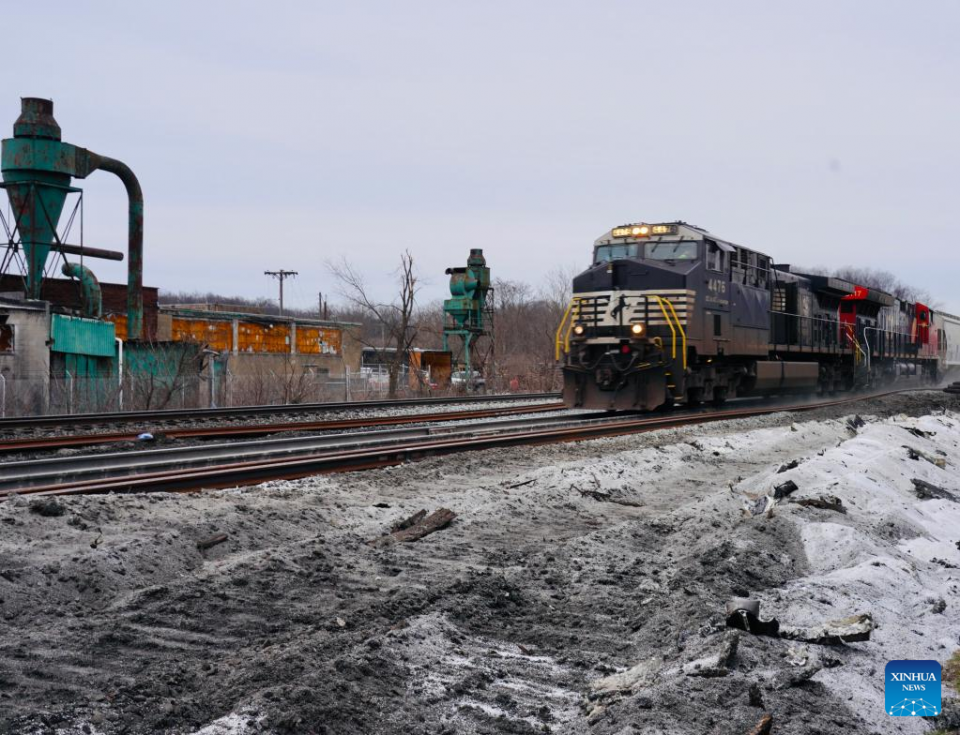
A Norfolk Southern freight train runs past the site of the Feb. 3 derailment on the outskirts of the village of East Palestine, Ohio, the United States, on Feb. 14, 2023. Residents in and around the village of East Palestine feared for their health and concerns have mounted about the environmental effect, after about 50 Norfolk Southern train cars, including 20 carrying hazardous materials, derailed on Feb. 3 on the outskirts of the village.
NEW YORK -- Residents in and around the village of East Palestine, in the Midwestern U.S. state of Ohio, feared for their health and concerns have mounted about the environmental effect, after about 50 Norfolk Southern train cars, including 20 carrying hazardous materials, derailed on Feb. 3 on the outskirts of the village.
No one was injured in the derailment that investigators said was caused by a broken axle. Fearful of a major explosion, authorities have carved out an evacuation zone and carried out a "controlled release" of toxic fumes to neutralize burning cargo inside some of the cars.
"Plumes of smoke, questions about dead animals, worries about the drinking water. A train derailment in Ohio and subsequent burning of some of the hazardous chemicals has people asking: How worried should they be?" reported The Associated Press on Wednesday.
Concerns about air quality and the hazardous chemicals on board the train prompted some village residents to leave, and officials later ordered the evacuation of the immediate area as fears grew about a potential explosion of smoldering wreckage.
TOXINS
Three days after the accident, authorities decided to release and burn vinyl chloride inside five tanker cars, sending hydrogen chloride and the toxic gas phosgene into the air.
Vinyl chloride is associated with increased risk of certain cancers, and officials at the time warned burning it would release two concerning gases -- hydrogen chloride and phosgene, the latter of which was used as a weapon in World War I.
According to the Associate Press report, environmental officials said that monitors detected toxins in the air at the site during the controlled burn and that officials kept people away until that dissipated. They said continuing air monitoring done for the railroad and by government agencies, including testing inside nearly 400 homes, hasn't detected dangerous levels in the area since residents were allowed to return.
However, even in communities beyond East Palestine, some residents said they worry about long-term effects of even low-grade exposure to contaminants from the site. The village scheduled a town hall at the local high school Wednesday evening to hear questions from residents, whose concerns have included lingering smells, how to ensure accountability for the cleanup, and what to make of pets and livestock that have appeared ill or died since the derailment.
CONTAMINATION
On Feb. 10, the Environmental Protection Agency (EPA) said that about 20 rail cars were reported to have been carrying hazardous materials. Chemicals including vinyl chloride, butyl acrylate, ethylhexyl acrylate and ethylene glycol monobutyl ethers were "known to have been and continue to be" released to the air, surface soil and surface waters.
On Feb. 12, the EPA, after monitoring the air, said it had not detected contaminants at "levels of concern" in and around East Palestine, although residents might still smell odors. The agency insisted that it had not detected vinyl chloride or hydrogen chloride, which could cause life-threatening respiratory issues.
On social media and in news reports, some residents said that fish and frogs were dying in local streams and people have shared images of dead animals or said they smelled chemical odors around town. "Residents of the area have complained of headaches and feeling sick since the derailment," reported The New York Times on Wednesday.
Ten days after the derailment, Senator J.D. Vance, a Republican of Ohio, said in a statement on Twitter that it was a "complex environmental disaster" that would require long-term study. The Ohio EPA is working on a two-stage cleanup, starting with the removal of materials from the site before moving to an assessment for a remediation plan.
LAWSUIT
Residents have filed a federal lawsuit over the derailment along the Ohio-Pennsylvania line, seeking to force Norfolk Southern to set up health monitoring for residents in both states.
The lawsuit filed on Feb. 9 by two Pennsylvania residents calls for the rail operator to pay for medical screenings and related care for anyone living within a 30-mile (48-kilometer) radius of the derailment to determine who was affected by toxic substances released after the derailment. The lawsuit is also seeking undetermined damages.
Environmental regulators have been monitoring the air and water in surrounding communities, saying that so far the air quality remains safe and drinking water supplies have not been affected.
While some residents have complained about headaches and feeling sick since the derailment, Norfolk Southern declined to comment on the lawsuit.
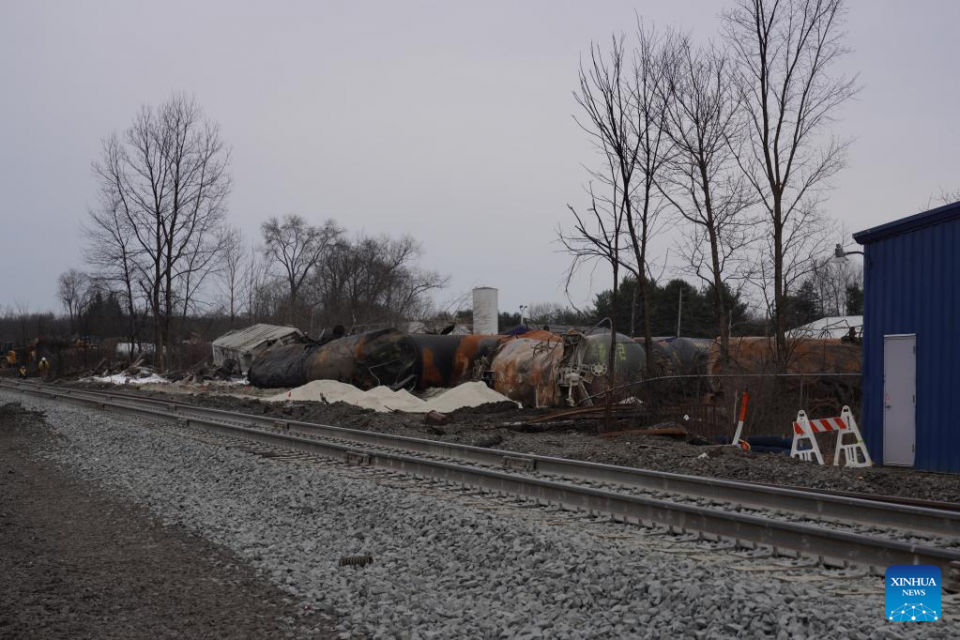
Train wreckage from the Feb. 3 derailment is seen piled up beside the railway on the outskirts of the village of East Palestine, Ohio, the United States, on Feb. 14, 2023. Residents in and around the village of East Palestine feared for their health and concerns have mounted about the environmental effect, after about 50 Norfolk Southern train cars, including 20 carrying hazardous materials, derailed on Feb. 3 on the outskirts of the village.
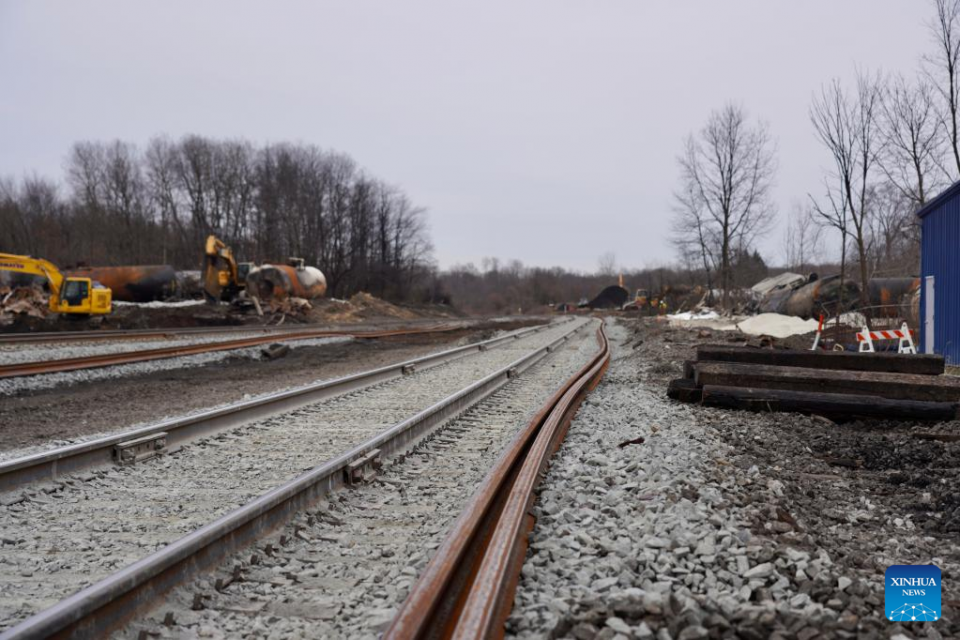
Twisted rails are seen on the site of the Feb. 3 derailment on the outskirts of the village of East Palestine, Ohio, the United States, on Feb. 14, 2023. Residents in and around the village of East Palestine feared for their health and concerns have mounted about the environmental effect, after about 50 Norfolk Southern train cars, including 20 carrying hazardous materials, derailed on Feb. 3 on the outskirts of the village.
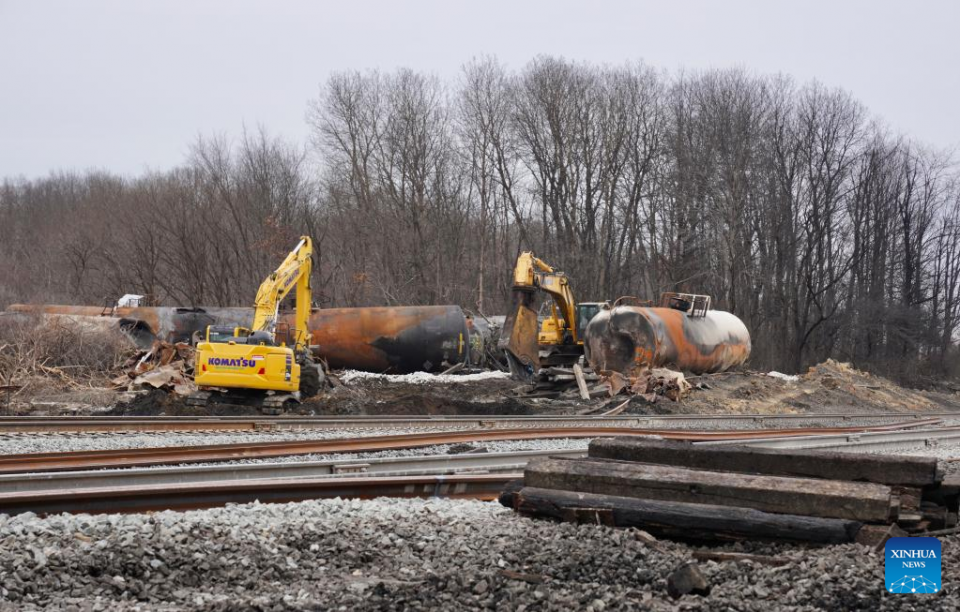
Excavators dig up contaminated soil on the site of the Feb. 3 derailment on the outskirts of the village of East Palestine, Ohio, the United States, on Feb. 14, 2023. Residents in and around the village of East Palestine feared for their health and concerns have mounted about the environmental effect, after about 50 Norfolk Southern train cars, including 20 carrying hazardous materials, derailed on Feb. 3 on the outskirts of the village.
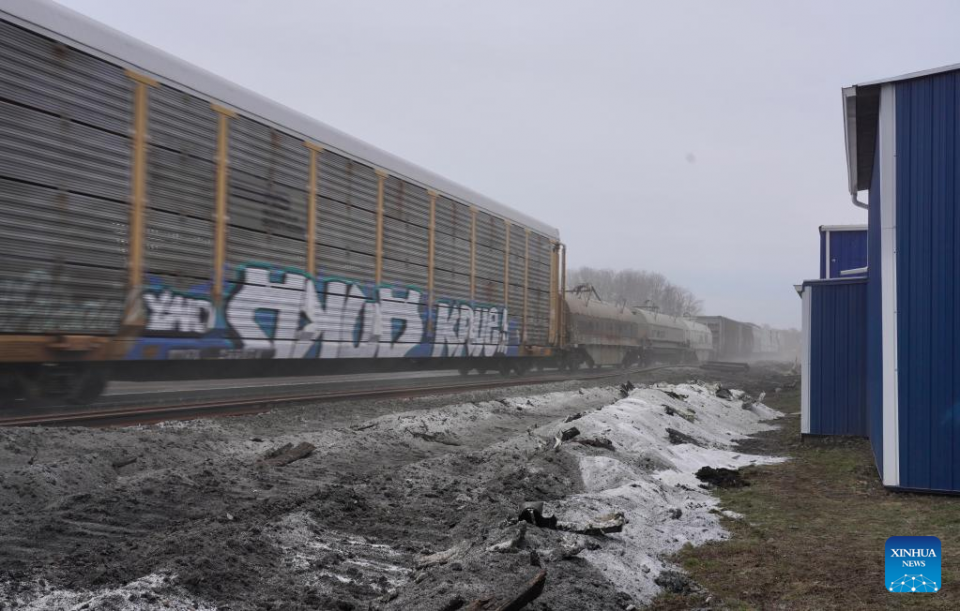
A Norfolk Southern freight train runs past the site of the Feb. 3 derailment on the outskirts of the village of East Palestine, Ohio, the United States, on Feb. 14, 2023. Residents in and around the village of East Palestine feared for their health and concerns have mounted about the environmental effect, after about 50 Norfolk Southern train cars, including 20 carrying hazardous materials, derailed on Feb. 3 on the outskirts of the village.
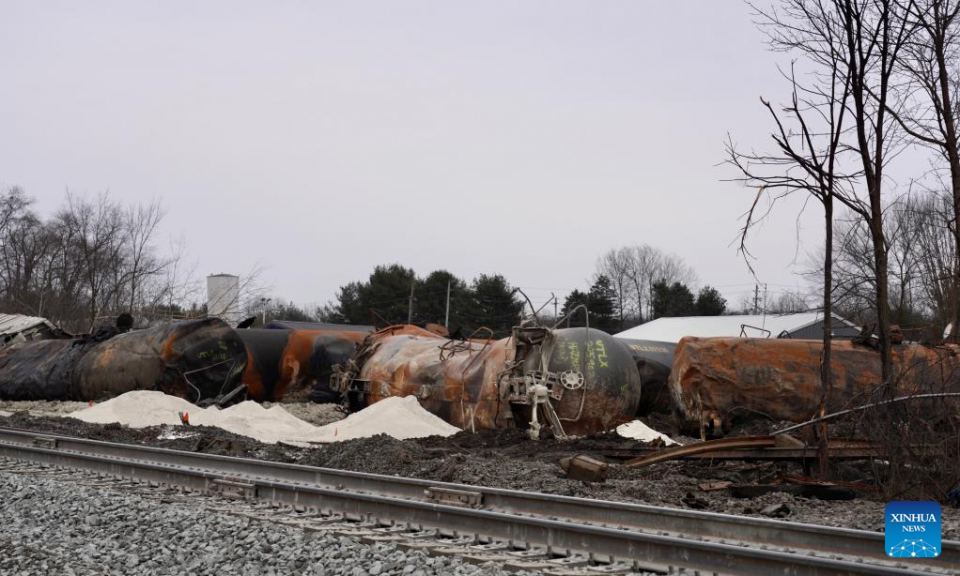
Train wreckage from the Feb. 3 derailment is seen piled up beside the railway on the outskirts of the village of East Palestine, Ohio, the United States, on Feb. 14, 2023. Residents in and around the village of East Palestine feared for their health and concerns have mounted about the environmental effect, after about 50 Norfolk Southern train cars, including 20 carrying hazardous materials, derailed on Feb. 3 on the outskirts of the village.
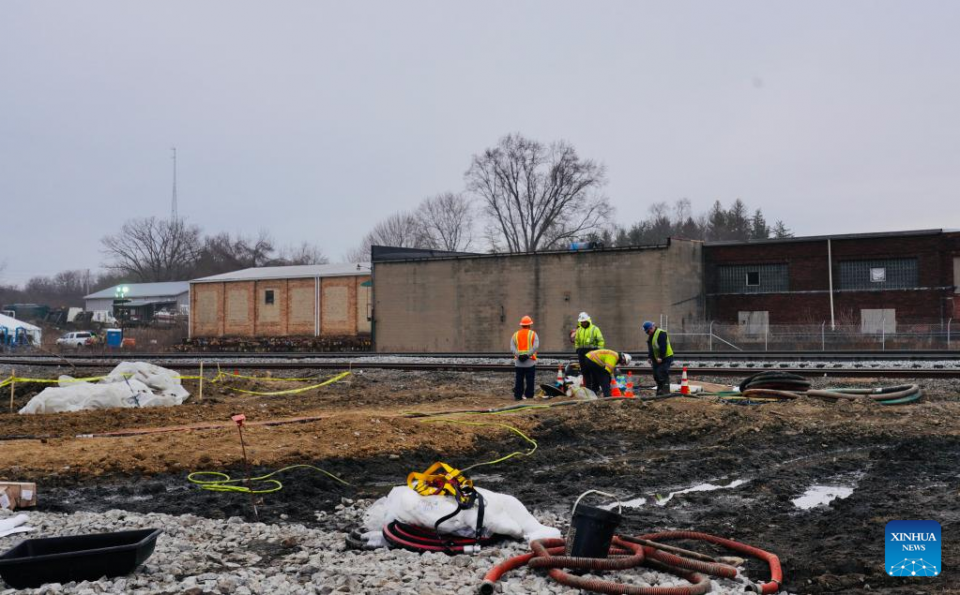
Workers drain contaminated water on the site of the Feb. 3 derailment on the outskirts of the village of East Palestine, Ohio, the United States, on Feb. 14, 2023. Residents in and around the village of East Palestine feared for their health and concerns have mounted about the environmental effect, after about 50 Norfolk Southern train cars, including 20 carrying hazardous materials, derailed on Feb. 3 on the outskirts of the village.












